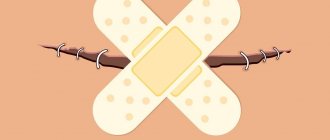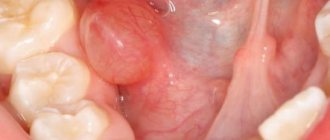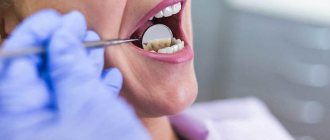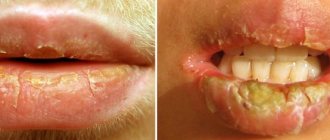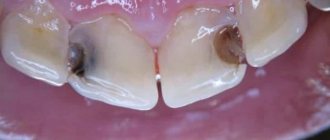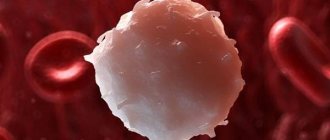Not everyone knows how sutures are removed after surgery, but this information is necessary, because it can protect against many unpleasant and unforeseen situations. Sutures should be removed by a professional after the required time has passed.
Sometimes the sutures are not removed, since after surgery special surgical threads are used, which dissolve and do not leave any marks.
However, in most cases the stitches need to be removed. What is worth knowing?
Postoperative sutures - what are they?
During any surgical operation, tissue damage occurs. During treatment, it is not always possible to do without a stitch, so the edges of the wound are pulled together and connected using staples or threads.
Recently, special surgical threads are increasingly being used that do not require subsequent removal - catgut. As the wound heals, such threads simply dissolve.
If regular threads are used after the operation, then after a certain period of time the suture must be removed. They are usually made with silk or nylon threads.
There are several types of surgical wound closure:
- primary - established immediately after injury or surgery;
- secondary - applied to a granulating wound;
- provisional - applied 4-5 days after surgery.
If a suture is placed from a non-absorbable material on a deep wound, then in the absence of an inflammatory process it remains in the tissues forever.
Postoperative sutures also differ in their type - interrupted, purse-string, wrapping. The type of suture is selected based on the wound or type of operation.
Restoring tissue integrity
Any PST ends with the edges of the wound getting closer together. Most often, this requires surgical sutures. This procedure significantly accelerates healing, significantly improves the functional and cosmetic effect, facilitates subsequent treatment of the wound, and also reduces the likelihood of its re-suppuration.
Skin tissue is sutured using special surgical needles (atraumatic or traumatic), as well as a certain suture material, which is selected by a surgeon depending on the condition of the wound.
The suture material used must be smooth, elastic, flexible, durable, and have a sliding surface. If self-absorbing sutures are used, it is important that the thread dissolves no faster than the scar is formed. An equally important point is the biocompatibility of the patient’s tissues and the suture material.
If the operation is performed in the facial area, any suture material can be used, except metal staples and wire, as well as silk and lavsan. For suturing the muscles and mucous membrane, any self-absorbable threads are used.
When is it necessary to take (2 indicators)?
After suturing, a certain period of time must pass, usually at least a week.
If they are applied to the face or neck, they can be removed earlier, provided there is no inflammation and the wound is healing well. When and how sutures are removed after surgery, photos can be viewed on special resources.
The time for suture removal should be assessed only by a doctor and depends not only on the type of operation, but also on the general condition of the patient.
It is impossible to determine the exact time of suture removal. It all depends on the situation.
Plastic surgeon John Burns
The following facts may indicate wound healing:
- crust formation - granulation at the wound site;
- Aligning the seam in color with the base leather.
If there are seals in the wound, then this should alert you . This may indicate the onset of the inflammatory process and improper healing.
Any suspicions must be reported to your doctor immediately. Timely intervention can prevent the development of pathologies.
Everything you need to know about sutures is told by Dr. V. Pirus:
In what cases is a wound sutured?
Suturing is a mechanical manipulation to connect the edges of damaged skin, which helps prevent microbes from getting inside and ensures accelerated regeneration. Sutures are placed to restore the natural anatomical position of the epithelial tissues.
In the absence of suturing, the wound takes on a chaotic appearance, is often injured, and the surface heals incorrectly, which is fraught not only with cosmetic defects, but also with restrictions on mobility.
Methods of suturing wounds
Not all injuries require stitches, but in especially dangerous situations this manipulation can save a person’s life.
You need to know which wounds need to be sutured:
- 1. If not only the epithelium is damaged, but also the subcutaneous tissue, which is accompanied by a long healing process and a high probability of infection.
- 2. If there are cuts in areas of skin tension: knees, elbows, joints, limbs.
- 3. If there is a laceration that requires matching of all edges.
Only a specialist can assess the importance of manipulation. If there is a wound, it is better to see a doctor, who will decide whether suturing is necessary or suggest alternative treatment methods.
The following are not subject to stitching:
- scratches, abrasions;
- wounds with divergence of edges up to 1 cm;
- puncture wounds without damage to vital organs;
- penetrating wounds.
Suturing is contraindicated if the victim is in shock and there is a pronounced purulent-inflammatory process in the wound.
How and why do seams come apart?
Sometimes situations arise when the seams come apart. In this case, you need to consult a doctor and stitch up the wound again if it has not yet healed.
They can also disperse on the surface of the skin and inside the wound. If this happens, the patient feels pain and discomfort, and bulges or pits may appear.
With discrepancy, an increase in body temperature may also be observed, and the condition gradually worsens. If the operation was performed on the abdomen, then nausea and vomiting may occur.
Feeling unwell, vomiting and nausea should alert you.
You cannot leave this situation to chance; you must immediately consult a doctor! Under no circumstances should you try to fix the seam yourself, do not touch it at all, treat it with a septic tank and go to the hospital.
Withdrawal algorithm
You can remove a surgical suture yourself if you have certain knowledge and do everything carefully. Although it is important to remember: the best solution is always to consult a doctor. Because there is a risk of infection or tissue damage.
In medical institutions
Stitches are removed from a sutured wound in medical institutions as follows:
- Remove the bandage.
- The edges of the injured area are assessed, the stitched area is examined, and the stitches are counted.
- Iodopirone or 70% alcohol treats the skin near the scar.
- A secondary narrow treatment of the tissue contraction site itself is performed.
- Each stitch is cut one by one, and the suture is removed from the wound by pulling with tweezers.
- Depending on the doctor's decision, not all stitches can be removed.
- Having finished removing the threads, the wound area is treated with an antiseptic.
- A sterile napkin is applied on top, secured with a bandage, or a bandage is applied.
- After removing the sutures, the surgeon gives recommendations on how to care for damaged skin surfaces.
Remove the stitches yourself
You can remove suture material from a small wound at home; the algorithm of actions will differ. Initially, you need to prepare everything you need to remove the threads.
- Organize a workspace for tools that will be useful when removing sutures. Remove all foreign objects from it, wipe off the dust, and treat the surface with alcohol. On a sterile napkin (tray), place a bandage, cotton wool, plaster, antiseptic (iodine, medical alcohol). The operation site should be well lit.
- Boil a pan of water. Dip metal tools (scissors, tweezers) into water. Boil for 3-5 minutes. Place on a clean, dry towel over the area where surgery will be performed. After the instruments have dried, they must be wiped with alcohol.
- Wash your hands with soap and dry. Wear sterile rubber gloves. Carefully remove the bandage (plaster) from the surface of the wound.
- Before removal, inspect the scar surface for redness and inflammation. Treat the damaged area and the skin around the periphery of the seam.
- Using tweezers, carefully pick up the stitch knot and lift it 2–3 mm. Place the jaw of the scissors under the thread and cut the suture material on the side of the knot.
- Gently pull the thread at the knot so that the cut part opposite the knot is pulled through the skin. Carry out such manipulations with each stitch. Sharp pain during suture removal may indicate incorrect action. Unpleasant sensations and discomfort when pulling the threads are considered acceptable.
- Treat the wound with an antiseptic. Apply a sterile bandage over it. If there are special doctor's recommendations, they must be followed.
Removing stitches (on legs and abdomen)
After abdominal surgery, stitches may be placed in the abdomen. They are usually removed 7-10 days after the operation.
The doctor must remove it under sterile conditions, as there is a risk of infection and inflammation may begin.
To remove sutures, sterile instruments such as anatomical tweezers and a cutting instrument are used. The wound is pre-treated with septic tanks. If there are several seams, they should be removed one by one.
Age and weakened immunity can increase the period of wearing stitches.
Plastic surgeon John Burns
You can watch a video of how sutures are removed after abdominal surgery here:
If you are interested in how sutures are removed after appendicitis surgery, then the removal technique is the same, for this you can watch other videos on the Internet. By the way, if there was a cosmetic suture, then use polypropylene, which is removed on the 10th day, or vicryl/monocryl, which does not require removal, since it dissolves.
You can watch the video below to see how sutures are removed from a leg after surgery. The technique is not much different.
It is necessary to remove the stitches, especially if the stitch hurts or a seal has appeared in this place. If you have any alarming symptoms, you should consult a doctor and get examined.
Perhaps inflammation has begun, in this case there is no need to delay going to the doctor - special treatment of the wound and early removal of the suture material will be required.
How to sew up a wound: procedures
All manipulations must be carried out carefully with minimal contact of the wound and objects. A sterile bandage or bandage is applied on top, after which the victim should be taken to surgery or an emergency room.
If there is heavy bleeding or a state of shock, no stitches are applied, and all efforts are directed to maintaining the vital processes of the body until the ambulance arrives.
If it is possible to visit a doctor, it is best to suture the wound in an operating room. Incorrectly applied sutures and contact with the wound surface of non-sterile objects can provoke the development of an extensive inflammatory process. This in turn will aggravate the situation and slow down the wound healing process.
How do you take pictures on your face?
Facial surgeries are some of the most difficult, especially when surgical material is required. You always want to maintain a beautiful appearance, and scars are far from the best decoration.
If the wound is closed correctly and in a timely manner, then there are practically no scars left, so in this matter the main thing is to trust a good specialist.
On the face, stitches are usually left in place for about a week.
Plastic surgeon John Burns
How are sutures removed after eye surgery? Essentially, the removal technology is the same everywhere, as long as they are done superficially. If they are made specifically on the cornea, and they are done after transplantation, then they are removed no earlier than after 8 months.
The removal procedure is essentially painless, but quite unpleasant. In some cases, local anesthesia may be used if the patient experiences severe discomfort. In all other cases, anesthesia is not used.
How to sew up a wound with an adhesive plaster?
It is difficult to call this a full-fledged seam, but if you have an adhesive plaster, you can reduce the amount of tissue divergence. For these purposes, take several strips of plaster, squeeze the healthy ends of the wound with your left hand and attach the plaster. This allows you to speed up the regeneration process and also reduces the likelihood of pathogenic microflora penetrating inside.
This method is suitable for stitching shallow cuts and wounds. In the future, you will need to consult a surgeon, who will indicate the need for sutures or make sure that this procedure is unnecessary.
Long but shallow wounds require sutures to prevent germs from entering. This is done by the surgeon, but in the absence of the possibility of receiving medical assistance, the sutures are applied independently. If you are unsure of what to do, it is best to cover the wound with a clean rag or bandages and provide the victim with prompt, qualified assistance.
How are sutures removed after laparoscopy?
Today, laparoscopic operations are often used. This intervention has its benefits.
Laparoscopy involves smaller incisions through which the doctor penetrates deeper with special devices, so the skin is not severely injured. This results in a shorter recovery period than with conventional surgery.
After the work is done, the doctor sews up the small incisions. The question arises, how are sutures removed after laparoscopy?
To begin with, it is worth noting that you need to take care of acquired wounds, this will speed up recovery. To do this, doctors advise treating them with antiseptic solutions and applying bandages, which regularly need to be replaced. The surgeon will definitely tell you about all the rules of care.
If you remove the stitches too early, they may come apart. If you delay this process, you may encounter suppuration, and the threads may begin to grow into the skin.
Plastic surgeon John Burns
The sutures themselves can be made of absorbable threads. They will disappear on their own in 6-7 days.
If threads were used that do not dissolve on their own, then you need to wait until the wound heals. Doctors cannot determine the exact timing of suture removal. This issue is resolved on an individual basis.
Often, sutures are removed 6-14 days after laparoscopy. The person himself, basically, is not in the hospital all this time, since discharge occurs much earlier.
If the sutures are removed in a timely manner, their ingrowth does not occur. In addition, recovery should be carried out without complications or discomfort. If pain occurs, consult a doctor!
How to sew up a wound: care rules
To reduce the likelihood of suture infection, it is necessary to assess the condition of the wound several times a day. Dressing of sutured wounds on the skin is carried out 2-3 times a day. The sterile dressing is carefully removed. If it is difficult to remove, the bandage is first soaked in hydrogen peroxide.
The seam is treated with antiseptics, giving preference to brilliant green and Chlorhexidine. After 2-3 days, when dry removal of the sterile bandage is noted during dressing, the latter need not be applied. Open wound management involves treating the suture without additional application of a bandage.
It is recommended to refrain from hygienic procedures during tissue fusion, as water can cause suppuration and aggravate the postoperative period. After 5-7 days, water procedures in the shower are allowed, after which the seam is blotted with a terry towel and additionally treated with an antiseptic.
Removing stitches in animals
Pets are also often seriously injured. You should not hope that deep wounds will heal on their own; you should consult a veterinarian.
If you leave everything to chance, an infection may enter the wound, which the animal simply cannot cope with. The application and removal of sutures in animals and humans is almost the same, the only difference is that the area of the body that is injured is first shaved.
Sutures in cats and dogs are also removed 5-10 days after surgery, it all depends on the degree of damage, the speed of healing and the general health of the animal.
If your dog or cat is seriously injured, do not hesitate, consult a doctor, and do not risk the health and life of your pet.
Types of sutures depending on the timing of application
There are several types of seams, each of which is used in specific cases:
- 1. Primary blind suture - applied after preliminary treatment and sterilization of the wound to prevent pathogenic microflora from entering the bloodstream.
- 2. Primary delayed suture - applied after the 3rd day of injury, when the swelling and inflammatory process in the wound have significantly decreased. A drainage is introduced, with the help of which the purulent contents will be drained out without stagnating inside the wound.
- 3. Early secondary suture - used to identify the first signs of regeneration of the deep layers of the dermis. Drainage is installed between the sutures, and the newly formed pink cells are not excised.
- 4. Secondary late suture - applied in the presence of a very deep wound, the regeneration of which is carried out from the inside. The manipulation is performed in the absence of pathological processes in the wound.
What types of sutures are there?
Currently, step-by-step suturing is not used except in critical situations that require immediate assistance without the possibility of visiting a qualified specialist.
Suturing in the field is often necessary for injuries during hiking, crossings and extreme tourism, when an open deep wound appears.
Is it possible to carry out the procedure at home?
It is recommended to remove postoperative sutures in the hospital and should be done by a good doctor. In some cases, the procedure is performed by a nurse.
There are cases where removal at home is allowed, but you must carefully prepare for the procedure. If possible, still consult a doctor to avoid unpleasant consequences.
Remove stitches at home only if you are sure of a good result, all deadlines have passed and the wound is healing normally. If the wound looks inflamed, or even worse - it’s festering, then in this case, under no circumstances try to do anything on your own, you need to consult a doctor.
Sequence of actions for self-removal of sutures:
- Decide on your tools and thoroughly sterilize them. You can boil the instrument and then treat it well with alcohol or hydrogen peroxide. Do not remove under any circumstances with a knife or blunt scissors; the tool must be safe and at the same time sharp enough!
- Thoroughly wash and sterilize the seam and the area of skin around it.
- Lift the first knot and gently pull; when a light thread appears, it needs to be trimmed. Now carefully pull out the thread using tweezers.
- Continue doing the same for all nodes. Do not pull the knot through the skin, only the thread itself. Otherwise, you will damage the skin and may start bleeding.
- Now you need to carefully check the area so that there are no threads left in it. Clean the wound and apply a sterile dressing.
In principle, there is nothing complicated, but the slightest mistake or wrong approach can lead to serious problems. Therefore, if you still have doubts, do not take risks.
At home, it is not recommended to remove stitches, especially after major operations or delicate cosmetic ones. Sometimes as healing progresses, the surgeon will determine whether it needs to be left for a few more days.
Plastic surgeon Justin Yovino (California)
There are cases when the wound requires specific care, which can only be carried out in a hospital by a professional. Therefore, patients are strongly discouraged from risking their health and the “beauty” of the future scar.
How to challenge a seizure or foreclosure
If the owner of a blocked card does not agree with the collection or arrest order, then you can legally send a complaint to the FSSP of the Russian Federation.
The application form can be found on this website. When challenging a decision to the FSSP, you must provide the following documents: SNILS, Taxpayer Identification Number, copy of your passport. Example of an application requesting to lift the arrest of accounts on the basis of an already repaid debt.doc [54 Kb] (downloads: 956) View online file: Example of an application requesting to remove the seizure of accounts based on an already repaid debt.doc
An example of an application in case the client is not a debtor, but a full namesake of the debtor with the same date of birth.doc [53.5 Kb] (downloads: 173) View online file: An example of an application in case the client is not a debtor, but a full namesake of the debtor with the same date of birth.doc
Call the bailiffs
If an account is seized, a visit or at least a phone call to the bailiffs cannot be avoided. It is necessary to find a compromise in order to remove the arrest from the card. The removal of the arrest occurs a few days after the repayment (full or partial) of the existing debt.
State Services website
You can find out the reason for the seizure of the card in your personal account on the website of the State Services of the Russian Federation. Not all information may be displayed here, or data may arrive on the site late. If you have any suspicions about the reasons for the arrest of the account, then you can try going to the relevant website, for example, tax arrears - to the website of the Ministry of Taxation, fines - to the website of the State Traffic Safety Inspectorate, etc.
Why do you need to shoot?
Sutures must be removed within the time strictly specified by the doctor. If this is not done on time, inflammation will definitely begin. Do not allow this to happen, because then you will have to undergo additional treatment.
In general, inflammation in a wound can lead to serious problems, including infection, so it is necessary to closely monitor the condition and visit a doctor in a timely manner.
The timing of wound removal and healing is an individual process. It is simply impossible to say exactly and definitely when and how to remove stitches.
Each situation is considered exclusively on an individual basis by a surgeon. After removal, it is necessary to strictly follow all the requirements and recommendations of the doctor, only in this case complete healing will be successful.
Arrest, blocking of Sberbank salary card
The state protects citizens even in such cases. For protection, a special law has been approved (Article 98 of the federal law “On Enforcement Proceedings”), which prohibits withdrawing all money from accounts so that a person can live on part of the funds earned. At the moment, there are several write-off options:
In this case, until the debtor appears in person and writes a statement requesting the seizure be removed from the account, the card will be blocked. If all the money has been written off, you need a certificate from work and a bank statement stating that you receive a salary into this account. Accordingly, the entire amount cannot be written off.
Seizure of funds on a Sberbank card: what to do
If any transactions on a bank account are prohibited, the client receives an SMS about the seizure of Sberbank funds. However, the message does not indicate the reason; you need to establish it yourself. It is necessary to find out who is the initiator of the seizure of Sberbank’s funds, and how to solve the problem that has arisen. It is better to do this directly at the bank, clarifying the reason with the operator, or contact the bailiff service.
If there is a debt on payments or obligations in order to collect funds to cover it, money is blocked on the debtor’s card. Most often, funds are seized in a Sberbank client’s salary account. Such an operation is usually carried out without warning in accordance with Federal Law No. 229 “On Enforcement Proceedings”.

